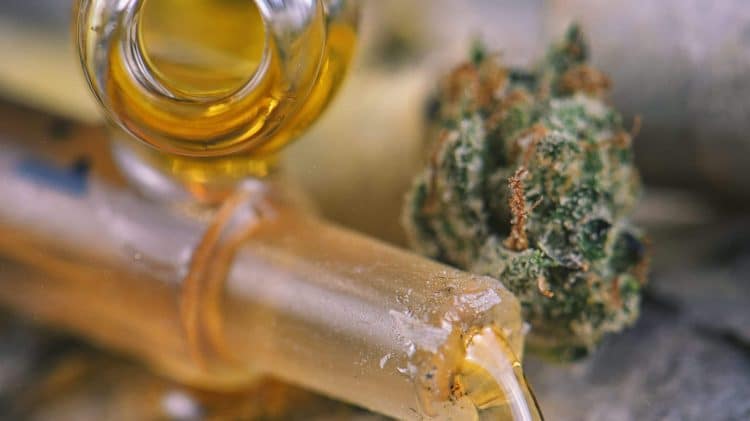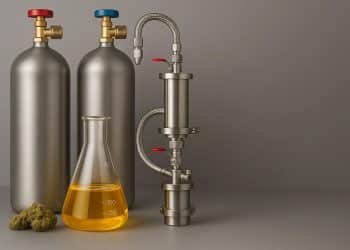The efficiency of different cannabis extraction methods isn’t as straightforward as some people might think, and despite being measured with black-or-white math, it can also be somewhat individualistic.
In that spirit, here is how the main cannabis extraction methods — ethanol, hydrocarbon, and CO2 — compare against the main aspects of efficiency. Note: this article does not take into consideration other factors when deciding which technique is right for you, like end product, or overhead costs. We’re only discussing extraction efficiency here.
Throughput
This is perhaps the aspect that’s the closest to the traditional notion of efficiency. It basically refers to the size of the batch that can be processed at once and the speed at which a processing cycle is completed.
Quality of End Product
Quality refers to how closely the end product is to its intended, optimal state, or in other words, how much of the targeted cannabinoids are extracted and how much are left in the raffinate, or spent biomass.
In some cases, quality may be measured by THC (tetrahydrocannabinol) or CBD (cannabidiol) purity; in others, extractors may be after a rich, full-spectrum profile, with a specific color.
Extraction Methods
Ethanol Extraction
Ethanol extraction may be defined by the simplicity of a bulk method, but the final product’s purity is in the ballpark of 80% cannabinoids with a decent solvent recovery rate near 85%. Some extractors, like Capna provide equipment capable of processing 5.5 to 7.9 pounds of biomass in 30 or 40 minutes, respectively. The extraction efficiency of these systems is reported to be nearly 99%. Eden Labs offers a larger scale system that can process 74 pounds per hour with a listed efficiency ranging between 90 and 99%.
So, if higher-throughput is indispensable, but supreme purity isn’t and, instead, decent results in that regard are sufficient, ethanol extraction can be attractive.
Supercritical CO2 Extraction
Supercritical carbon dioxide (CO2) extraction is efficient in terms of the precision of targeting different cannabinoids, and especially terpenes, as it’s a non-polar solvent, and extraction temperature and pressure are adjustable. This is why this method is popular among extractors who are after terpenes and aromatic end products.
One small-scale CO2 extraction study reported an extraction efficiency of 92%. [1] Larger scale, commercial CO2 extractors, like those at Apeks Supercritical, are capable of reaching this level of efficiency as well.
Supercritical extraction is sometimes labeled as not being super-fast compared to hydrocarbon extraction. For example, Claywolf found it produces 3 production runs with CO2 in 24 hours, the same time it takes its sister company to produce 18 with hydrocarbon.
The capacity of the CO2 extraction vessel, however, controls how much biomass can be processed in a given time. The 2x360L system available from Thar Process, for example, can extract 2,000 to 3,000 pounds of biomass per 24 hours, using 3 production shifts, and Thar manufacturers the largest CO2 extraction vessels in the world, which can greatly augment processing throughput.
Solvent recovery is more efficient with CO2 compared to ethanol, as nearly 99.9% of the CO2 can be recycled, without concomitant losses in the recirculated solvent’s ability to adequately solvate the molecules of interest.
Hydrocarbon Extraction
Hydrocarbon extraction involves solvents like butane or propane, which, like CO2, are non-polar, so they are also great if you’re targeting fat-soluble THC, CBD, and terpenes. Since these are ubiquitously considered the current Holy Trinity of cannabis, hydrocarbon extraction, despite its obvious safety concerns, is still a relevant method for product design. When compared to CO2, however, longer contact times can remove undesirable compounds like chlorophyll.
Claywolf praises the energy efficiency offered by hydrocarbon extraction in terms of electricity usage, as well as its speed, demonstrating processing capacities of 15 pounds per hour and others going through 18 production runs in 24 hours. ExtractionTek provides higher-throughput options that are capable of reaching 55 or 100 pounds per 8-hour shift, for butane and propane, respectively, and Precision Extraction Solutions manufactures more industrial-scale systems that can process 3,000 pounds per day using 3 shifts.
Solvent recovery is possible with hydrocarbon extraction, with a reasonable recovery of around 90%. While higher efficiencies are reachable, input energy requirements can hinder what’s practical.
Hydrocarbon extraction is labeled by some to be the most efficient, but it’s clear that the efficiencies of ethanol and CO2 can also be quite high. As mentioned above, efficiency is a multi-faceted matter and can be determined on the individual extractor’s needs and goals. This article highlighted some efficiencies regarding extraction solvent, biomass throughput, and solvent recovery. Other factors will be important, however, including solvent storage capabilities, since there are restrictions on storing large quantities of potentially dangerous solvents; waste generation; and capital costs for obtaining the desired equipment.
References:
[1] Rovetto, L. and Aieta, N. “Supercritical carbon dioxide extraction of cannabinoids from Cannabis sativa L. plant material”, The Journal of Supercritical Fluids, vol. 129, 2017, pp. 16-27. [journal impact factor = 3.481; cited by 9]












